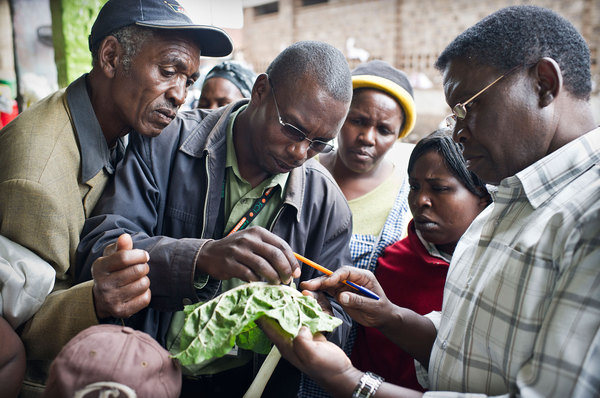Update: Plant Health News (01 Feb 12)
Here’s a taste of some of the latest news stories about plant health, including the return of potato blackleg, new research on zebra chip disease, and an unexpected locust deterrent. Click on the link to read more of the latest plant health news.
Update: New Pest & Disease Records (25 Jan 12)
We’ve selected a few of the latest new geographic, host and species records for plant pests and diseases from CAB Abstracts. Records this fortnight include the most devastating coffee pest, the coffee berry borer, being found in Hawaii; a new fungal disease of citrus plants in the Philippines; and insects causing damage to amaranth crops…
Update: Plant Health News (18 Jan 12)
Here’s a taste of some of the latest news stories about plant health, including apple troubles in Brazil, strawberries suffering from resistant moulds, and pests hitching a ride in Australia. Click on the link to read more of the latest plant health news.
The future might be bright, but it’s not looking so orange
Oranges – from Flickr by Rosino I start this week’s blog with a challenge for you: You are a smallholder farmer living in a remote village in Brazil. You have decided to grow oranges, a crop that has done well in neighbouring farms and provided a good income. It’s November and your crop is growing well,…
Bad date?
Date palm with Bayoud disease, Image from J. Louvet, Bugwood.org A bad date usually involves awkward conversation or an unfortunate incident with a hot cup of coffee, but for Algerian and Moroccan farmers there is a much fruitier issue at hand. Date palms (Phoenix dactylifera) have long-suffered the effects of the Fusarium oxysporum f.sp. albedinis fungus, which…
Update: Plant Health News (5 Jan 12)
Here’s a taste of some of the latest news stories about plant health: Malaysia: Banana growers’ big headache FreshPlaza.com, 3 January 2012 Evaluation of Foliar Fungicides and Insecticides on Soybean in 2011 Crop News, 3 January 2012 iMetosTRAP: Alert automatic system for pest occurrence on crops FreshPlaza.com, 2 January 2012 Rwanda: Scientists to Help Fight Coffee Pest AllAfrica News:…
Long-horn beetles take a liking to frankincense
Frankincense – Image from Wikimedia While we have been filling our homes with traditional Christmas trees, the long-horn beetle has instead decided to go for a more up-market décor. Boswellia trees, which produce the resin used to make frankincense, have recently suffered from a worrying decline in numbers, with experts predicting that we have limited…
Update: Plant Health News (21 Dec 11)
Here’s a taste of some of the latest news stories about plant health: Ethiopia: Tuta absoluta is extending its damage to the potato tuber Fresh Plaza, 20 December 2011 Kenya: Hope for avocado as country sets wasps on fruit flies FreshPlaza, 20 December 2011 Israeli green pest control FreshPlaza, 20 December 2011 Scientists crack locust…
Deck the halls with boughs of…Vascular-Streak Dieback?
As the supermarkets fill their shelves with an abundance of chocolate in anticipation of the festive season, the supply appears plentiful. For Indonesian cocoa farmers, however, the story is a very different one. 10% of global cocoa output comes from Indonesia, but this year the Indonesian cocoa industry has suffered from outbreaks of Vascular-Streak Dieback…
Update: New Pest & Disease Records (15 Dec 11)
We’ve selected a few of the latest new geographic, host and species records for plant pests and diseases from CAB Abstracts. Click on the links to view the abstracts. Detection of ‘Candidatus Phytoplasma brasiliense’ in a new geographic region and existence of two genetically distinct dnaK genotypes. Balakishiyeva, G.; Qurbanov, M.; Mammadov, A.; Bayramov, S.;…

